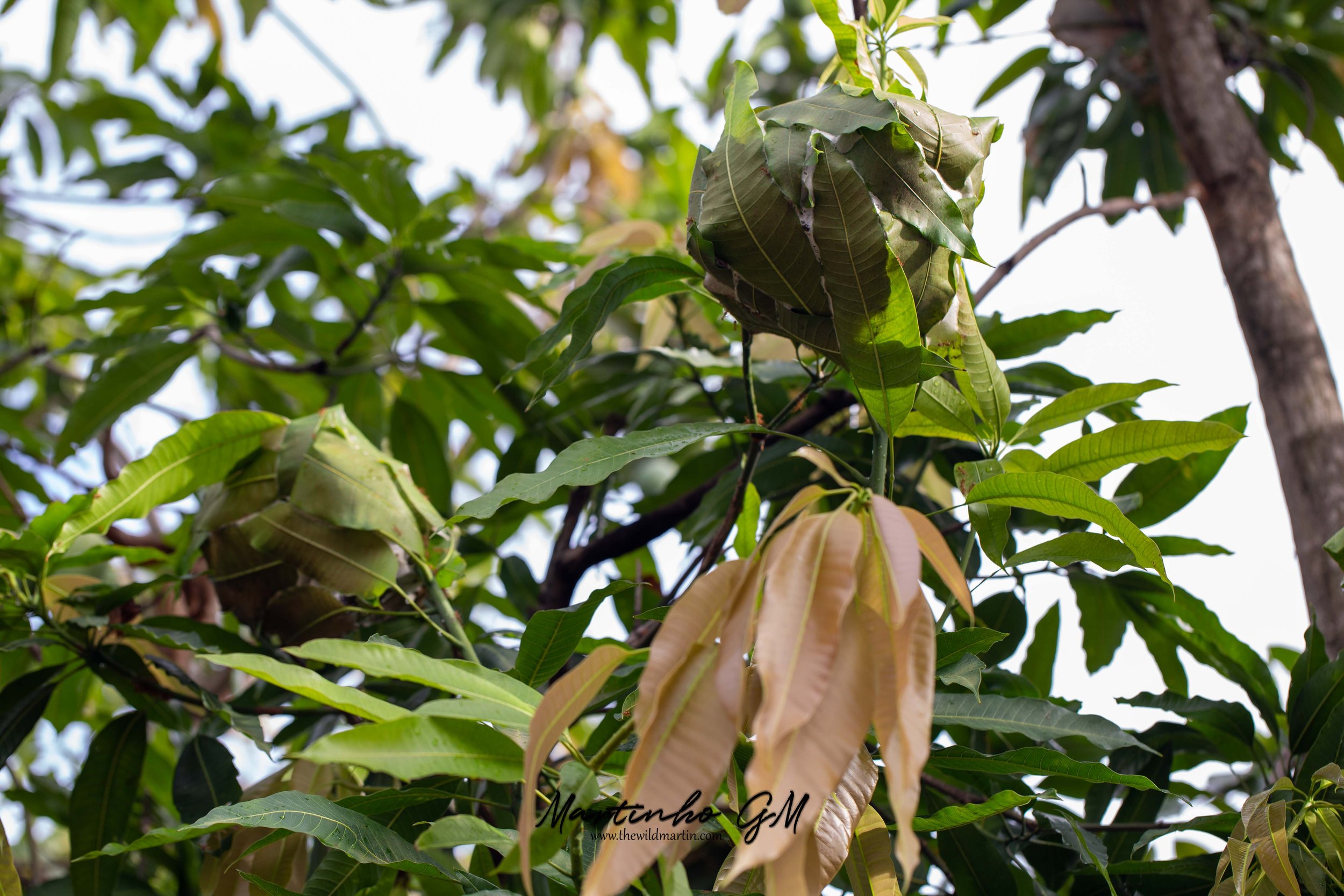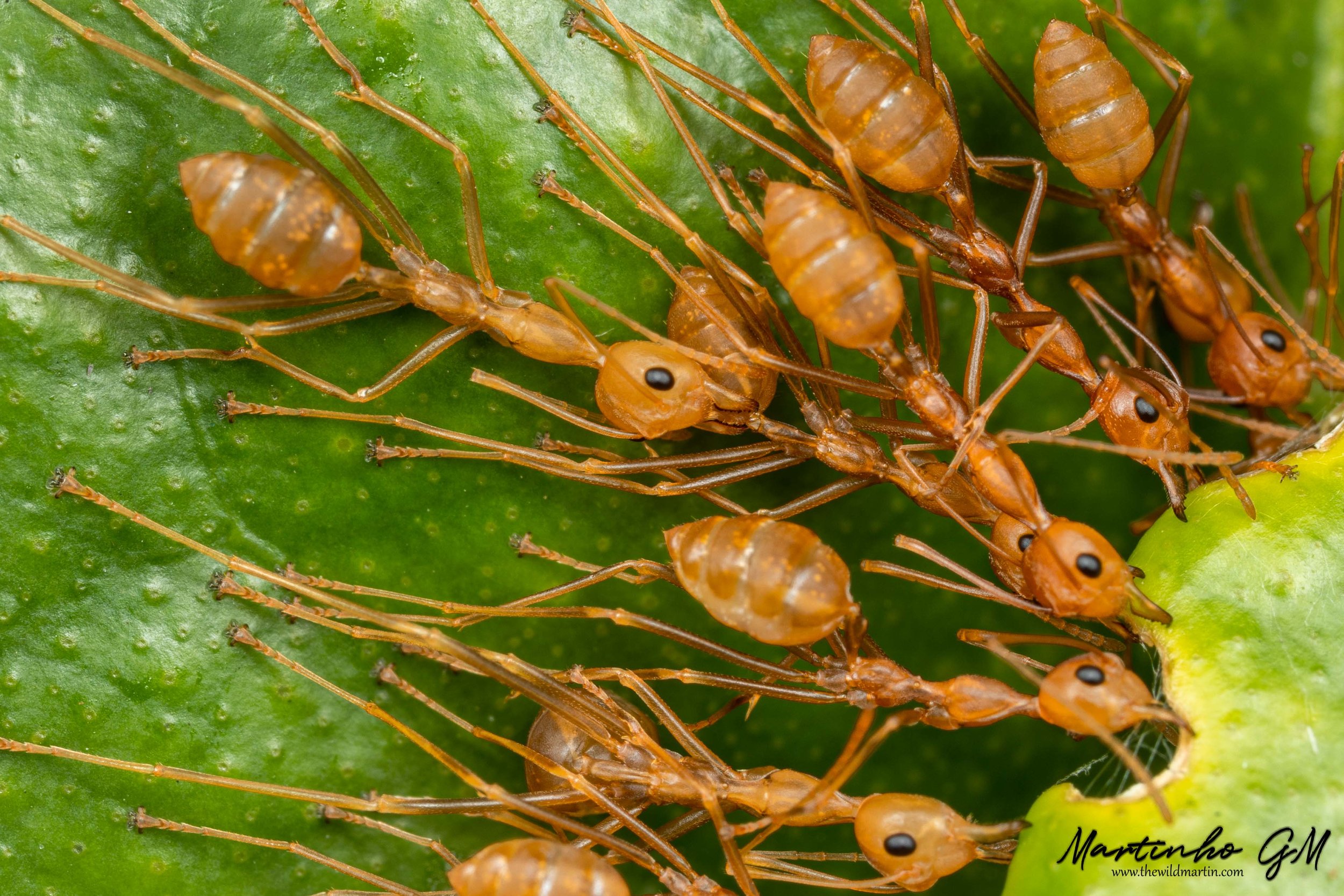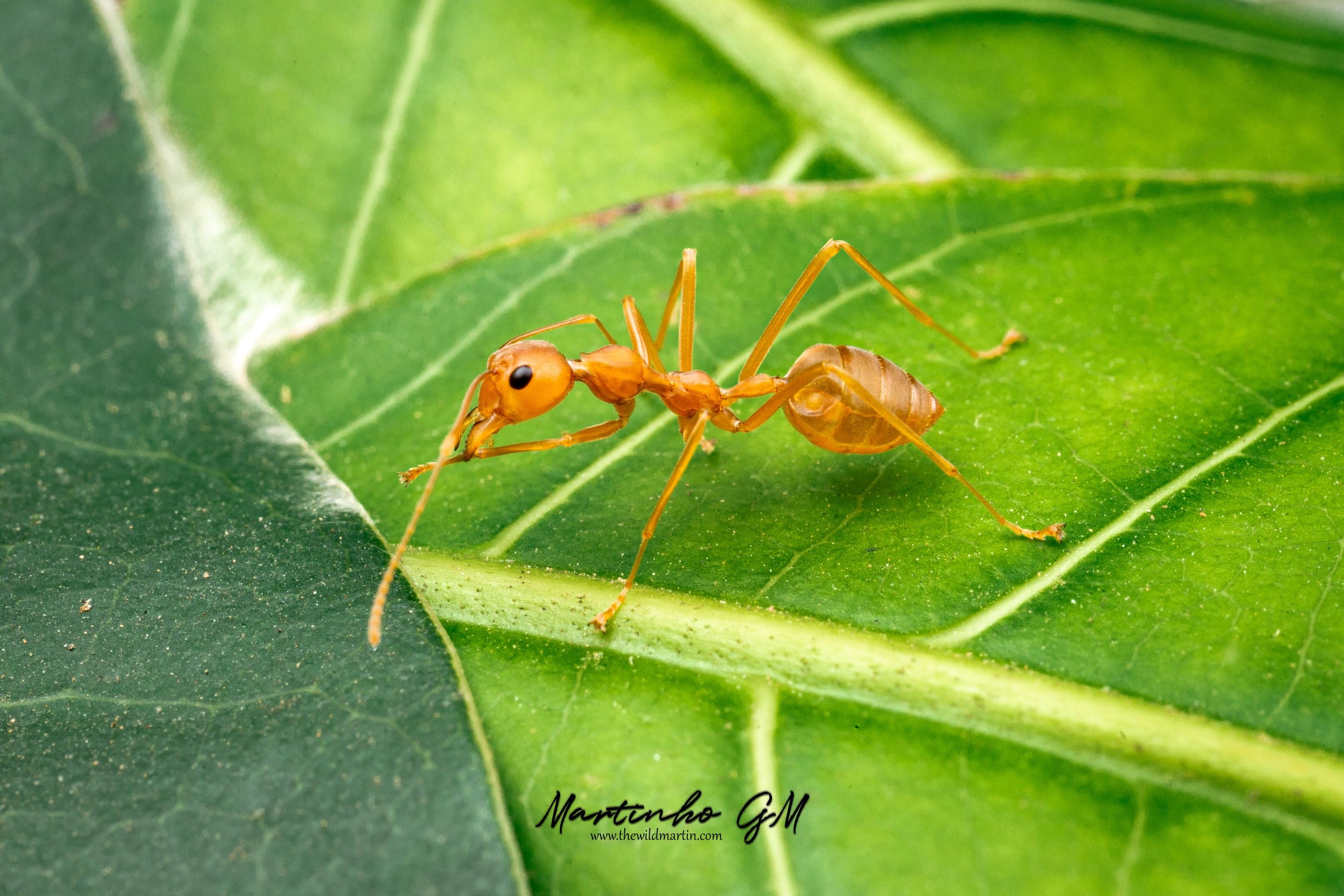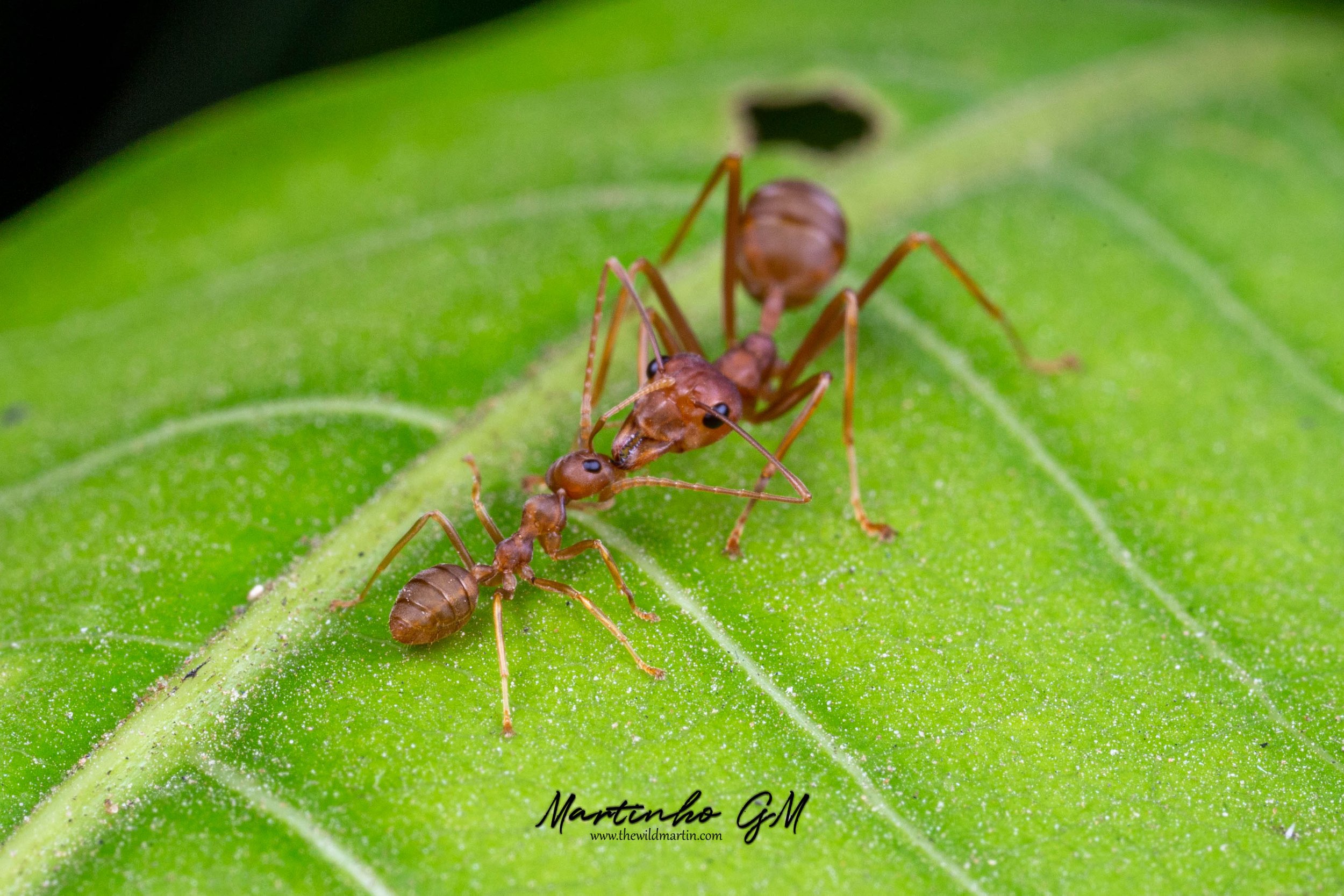Oecophylla smaragdina, Asian Weaver Ants. Ecology and Care Guide
Oecophylla smaragdina worker (Asian Weaver Ant)
INTRODUCTION / SUB FAMILY / GENUS
Oecophylla derived from Latin words, oeco (meaning house or household) and phylla (plural for phyllum which means having leaves or leaflike parts) and smaragdina, also derived from Latin, meaning emerald.
And so, Oecophylla smaragdina, the emerald leafhouse ant.
Oecophylla smaragdina tree nests
I have written this before, but I don’t get tired of it. I have actually had a lot of fun trying to decipher what the latin/greek names mean. I feel it takes us back hundreds of years back, in this case back to 1775 when Fabricius first identified this species. Can you imagine yourself traveling by boat and trains, taking probably months to get to your destination, a strange land, with different people, to find new animals, previously unknown, and seeing them for the first time.
Oecophylla species are among the most iconic tropical ants presenting the most sophisticated nest-building activities of all weaver ants. Workers draw leaves together, often forming long chains, and glue them together with larval silk.
Oecophylla smaragdina worker chains while weaving nests
And this was what Fabricius saw, emerald leafhouse ants.
COMMON NAME
They are known for many different common names such as Asian weaver ant, weaver ant, green ant and green tree ant.
Oecophylla smaragdina worker on patrol
Now that we have uncovered its name, let's go deeper into its ecology, the relationships between the ants and their surrounding physical environment.
DISTRIBUTION
There are only two existing Oecophylla species in the world. One is O. longinoda, which is distributed in the African Tropical region, and the other one is O. smaragdina which is distributed from southern Asia, through southeastern Asia to northern Australia and Melanesia.
Oecophylla smaragdina worldwide distribution - AntMaps.org
But in this article we are focusing exclusively on the O.smaragdina.
CASTES
Even though previous bibliography and reference papers indicate that Oecophylla smaragdina have only two types of worker castes in their colonies (major and minor), recently (2011), a third caste (intermediate) has been identified not only by differences of body size but also from specific protein markers.
Oecophylla smaragdina minor and major worker
As such, Oecophylla smaragdina no longer is a dimorphic species but becomes a clearly polymorphic one with three types of apterous workers (major, intermediate and minor) and two types of winged forms (Queens and drones).
MORPHOLOGY
Workers are mostly coloured orange, but can also vary between reddish to yellowish brown, depending on their locality. For the Australian variants, they will have a very characteristic green gaster.
Oecophylla smaragdina worker
Minors are 5–6 millimeters long and they mainly look after larvae; Intermediates are between 8-9 millimeters; and Majors are longer than 10 millimeters, with long strong legs and large mandibles, they are mainly responsible for foraging, assembling and expanding the nest.
There are no morphological differences between the three castes, except their size. As similarly to what happens with Solenopsis invicta where all major, media and minor workers are basically a scaled version of each other.
Oecophylla smaragdina dark Orange Red Queen from Northern China
Queens are typically 20–25 millimeters long, and normally greenish-brown, but their coloration can vary depending on their locality, from bright green, yellow, orange and to light brown.
Oecophylla smaragdina Yellow Green Queens from Western China
Drones are 10–11 millimeters long, and black.
Oecophylla smaragdina Green Orange Queen from Thailand
LIFE CYCLE
The life cycle of this ant species like any other has four stages: egg, larva, pupa, and adult.
The new virgin queen ants fly and search for mates. They can mate with one or a few males ( one at a time) in the air, or on low vegetation, or on the ground. Once mated, they look for a nest site, either on trees or open fields.
Oecophylla smaragdina Queen with first eggs
Once situated, they will get rid of their wings, and start laying a small batch of eggs.
Within 5 to 10 days after dealation, queens produce a relatively uniform egg batch between 25 to 40 eggs, independently of temperature, however, the same rules doesn’t apply to brood development, which varies greatly at different temperatures.
Oecophylla smaragdina Queen in her nest
For the purpose of having a uniform reference, the following development cycles are at 25C.
The first larvae began to appear after 10 to 11 days, while the first pupae appeared after 23 days. Finally the first worker emerges 39 days after the first batch of eggs.
Oecophylla smaragdina pupae and first workers eclosing
Oecophylla smaragdina nest in the wild being built
Another interesting number for anyone keeping their first Oecophylla colony is silk production, or silk weaving, which normally begins 11.4±3.1 days (average day 14) after the first larvae hatched, when maximum larval length was 54.7±6.5 mm. As soon as these last-instar larvae arise, they are used by the queen to seal the nest chamber with silk.
Oecophylla smaragdina early nest
For anyone keeping their colony at 30C, you can expect the first worker at the 28th day and there are no references of queens kept at 20°C which successfully reared any adult workers, so please bear this in mind.
One to three days after the first worker emerges the nest is opened through a hole and outside activity starts.
In the wild, it's reported that the average life of a mature colony may be around eight years.
REPRODUCTIVE STRATEGY
I think at this point it will be interesting to talk about their reproductive strategy, not only from the natural point of view but also from a keeper’s point of view.
This species is considered monogynous, but capable of haplometrotic colony founding and pleometrotic colony founding, this means that a colony formation can be initiated by a single queen or by multiple queens as well. But as mature Oecophylla colonies are monogynous, after passing foundation stage, on the long run, one queen will fight for being the dominant one, either evicting or killing her other queen's nestmates.
If you are planning to introduce several queens together, please know that intercolony (different colony) queen aggression was found to be much higher than intra-colony (same colony) aggression.
NESTING AND COLONY STRUCTURE
Weaver ants live in trees (they are obligately arboreal) and are known for their unique nest building behavior where workers construct nests by weaving together leaves using larval silk.
Oecophylla smaragdina workers weaving a new nest
They are defined as polydomous, which means, capable of residing in several nests.
The structure of O. smaragdina colonies can be explored at three different scales: colony, tree, and nest. A weaver ant colony may have several nests in one tree, and the nests may be spread over several adjacent trees.
In the wild, colonies can reach up to half a million individuals. In one instance, a colony was found to occupy 151 nests distributed among 12 trees.
The weaver ant's ability to build capacious nests from living leaves has undeniably contributed to their ecological success. The first phase in nest construction involves workers surveying potential nesting leaves by pulling on the edges with their mandibles. When a few ants have successfully bent a leaf onto itself or drawn its edge toward another, other workers nearby join the effort.
When the span between two leaves is beyond the reach of a single ant, workers form chains with their bodies by grasping one another's petiole (waist). Multiple intricate chains working in unison are often used to ratchet together large leaves during nest construction. Once the edges of the leaves are drawn together, other workers retrieve larvae from existing nests using their mandibles.
Upon reaching a seam to be joined, these workers tap the head of the clutched larvae, which causes them to excrete silk. They can only produce so much silk, so the larva will have to pupate without a cocoon. The workers then maneuver between the leaves in a highly coordinated fashion to bind them together.
Weaver ant's nests are usually elliptical in shape and range in size from a single small leaf folded and bound onto itself to large nests consisting of many leaves and measure over half a meter in length. The time required to construct a nest varies depending on leaf type and eventual size, but often a large nest can be built in significantly less than 24 hours. Although weaver ant's nests are strong and impermeable to water, new nests are continually being built by workers in large colonies to replace old dying nests and those damaged by storms.
FORAGING AND FEEDING
The predatory power of Oecophylla smaragdina is most outstanding.
Oecophylla smaragdina workers on defensive posture
Weaver ants feed on insects and other invertebrates, their prey being mainly beetles, flies and hymenopterans. They do not sting, but have a painful bite into which they can secrete irritant chemicals from their abdomens. In Southeast Asia, colonies are often found in trees which entice the ants with nectar, the trees in return receiving protection from herbivorous insects. The trees supporting weaver ant colonies include mango, banana, coconut, oil palm, rubber tree, cacao, teak, jackfruit, Chinese laurel, petai, jengkol, duku, rambutan, jambu air and kedondong.
The ants also attend to aphids, scale insects and other homopterans to feed on the honeydew they produce, especially in tree canopies linked by lianas or sometimes linked by human structures, fences, electrical cables, etc.
Oecophylla smaragdina pinning down a roach
Satellite nests may be built by the ants close by specially to protect these assets.
A study showed that O. smaragdina was diurnal and their foraging activity ceased abruptly after 6 p.m. and resumed after 6 a.m.
The daily foraging pattern was significantly influenced by both temperature and relative humidity. According to the type of weather, there is continuous activity outside the nest constantly in the wet tropics or in a diurnal pattern in the drier part of recurring climates
Oecophylla smaragdina foraging
Results also revealed that food higher in protein content was highly preferred compared to foods with lipid and carbohydrate contents, but that throughout the seasons they will adjust these preferences accordingly to their needs.
CONCLUSION
Hope you have enjoyed reading this short article about the “Emerald Leafhouse Ants” and as usual I have left you a very small video in the link down below with, in case you are interested.
Let me know down in the comment section if you have any comments or questions. Thank you once again for stopping by and taking the time to read.
Hope to see you in the next one!
Cheers!






















